Artisan Coffee Beans : The Ultimate Buying Guide
Note: This page contains affiliate links.
As an Amazon Associate, I earn from qualifying purchases when you click on the link, but you are not charged extra.
In the ever-evolving world of coffee, artisan beans represent the pinnacle of quality and craftsmanship. Unlike mass-produced coffee, artisan beans are cultivated with meticulous care, focusing on unique flavors, sustainable practices, and small-batch roasting techniques. This guide will delve into the intricacies of artisan coffee, offering insights into the sourcing, roasting, and brewing processes that define these exceptional beans. Whether you’re a seasoned coffee enthusiast or a curious newcomer, understanding the nuances of artisan coffee can elevate your daily brew from a routine to a ritual.
As we explore the world of artisan coffee beans, we will highlight the key factors that contribute to their distinctiveness—from the origin of the beans to the impact of soil and climate on flavor profiles. We’ll also cover how to identify high-quality artisan coffee, tips for brewing to perfection, and how to appreciate the subtle notes and aromas that set these beans apart. Prepare to embark on a journey through the rich and diverse landscape of artisan coffee, where every cup tells a story of passion, dedication, and extraordinary taste.
Artisan Coffee Beans: Quick Comparison Table
| Coffee Bean | Features | Pros | Cons |
|---|---|---|---|
Starbucks Dark Roast Variety Pack, 3 x 12 oz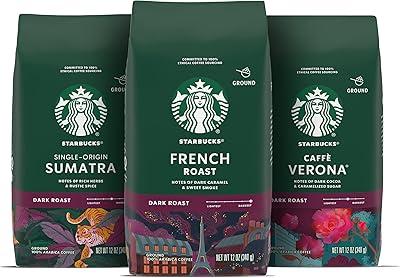 Check Price Check Price |
|
|
|
Kicking Horse Three Sisters Coffee, Medium Roast, 10 oz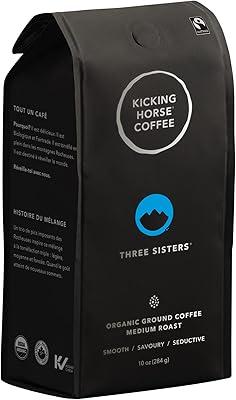 Check Price Check Price |
|
|
|
Kicking Horse Kick Ass Dark Roast Coffee, 10 oz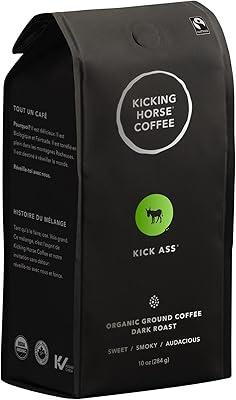 Check Price Check Price |
|
|
|
Kicking Horse Grizzly Claw Dark Roast Coffee, 10 oz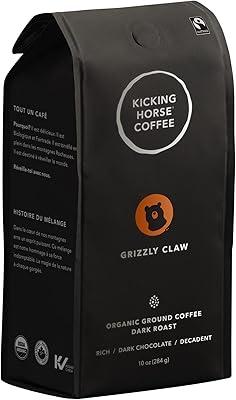 Check Price Check Price |
|
|
|
Lavazza Qualita Oro Coffee, 8 oz Cans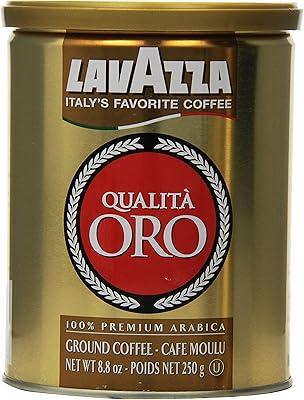 Check Price Check Price |
|
|
|
Community Coffee & Chicory, Medium Roast, 32 oz Check Price Check Price |
|
|
|
Cafe Gavina Espresso Extra Fine Coffee, 10 oz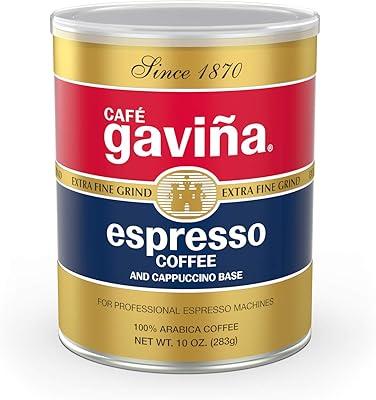 Check Price Check Price |
|
|
|
Jacobs Kronung Coffee, 500 g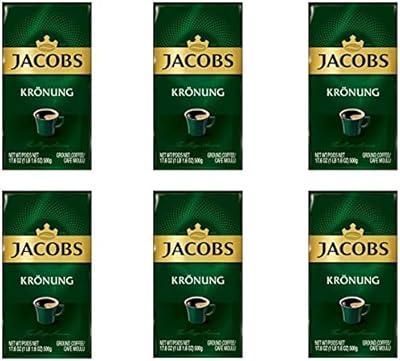 Check Price Check Price |
|
|
|
Santo Domingo Medium Roast Coffee, 16 oz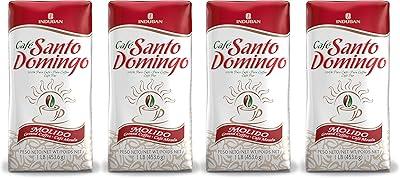 Check Price Check Price |
|
|
|
Wake The Hell Up! Ultra-Caffeinated Coffee, 12 oz Check Price Check Price |
|
|
|
Artisan Coffee Beans: Top Recommendations
Starbucks Dark Roast Variety Pack, 3 x 12 oz
The Starbucks Dark Roast Variety Pack includes three distinct dark roast blends, each providing a bold and intense flavor profile. Perfect for those who appreciate a strong, full-bodied coffee experience. This pack allows you to explore different dark roasts from Starbucks, ensuring a rich and satisfying coffee journey.
Features:
- This pack includes three different dark roast blends
- offering a range of bold
- intense flavors. Each bag contains 12 oz of coffee beans.
Pros:
- The variety pack allows you to experience different dark roast profiles
- catering to diverse tastes. Starbucks is known for consistent quality and rich
- robust flavors.
Cons:
- Dark roasts can sometimes be bitter for some palates
- and the pre-ground coffee might not be as fresh as whole beans.
Kicking Horse Three Sisters Coffee, Medium Roast, 10 oz
Kicking Horse Three Sisters Coffee is a medium roast that delivers a smooth and well-balanced flavor. Its organic and fair-trade certifications highlight its ethical sourcing, making it a great choice for those who value both quality and sustainability.
Features:
- Medium roast with a smooth
- well-balanced flavor profile. 10 oz package.
Pros:
- Offers a harmonious blend of flavors with a medium roast that is neither too strong nor too mild. Organic and fair-trade certified
- appealing to ethical consumers.
Cons:
- Limited to a medium roast
- which may not satisfy those who prefer stronger or darker roasts. The 10 oz size may be insufficient for heavy coffee drinkers.
Kicking Horse Kick Ass Dark Roast Coffee, 10 oz
Kicking Horse Kick Ass Dark Roast Coffee offers a bold and intense flavor for those who love a strong coffee experience. Crafted with high-quality, organic beans, it provides a rich and satisfying taste. This dark roast is perfect for those who crave a powerful and invigorating coffee.
Features:
- Dark roast with a full-bodied
- intense flavor. Comes in a 10 oz package.
Pros:
- Ideal for those who enjoy a bold
- robust coffee. Made with high-quality beans and organic practices. Strong flavor profile with a satisfying depth.
Cons:
- The intense dark roast may be too strong for those who prefer milder coffee. The 10 oz size might not be enough for regular drinkers.
Kicking Horse Grizzly Claw Dark Roast Coffee, 10 oz
Kicking Horse Grizzly Claw Dark Roast Coffee features a deep, smoky flavor profile that offers a robust and intense coffee experience. With its organic and fair-trade certification, it also appeals to those who value sustainable and ethical sourcing.
Features:
- Dark roast with a deep
- smoky flavor profile. Packaged in 10 oz.
Pros:
- Known for its rich
- full-bodied taste with a smoky finish. Organic and fair-trade certified
- ensuring ethical sourcing.
Cons:
- The strong
- smoky flavor may not appeal to all coffee drinkers. The 10 oz size might be limiting for frequent coffee consumers.
Lavazza Qualita Oro Coffee, 8 oz Cans
Lavazza Qualita Oro Coffee is a medium roast that delivers a smooth and creamy taste with a sweet, floral aroma. The 8 oz can ensures freshness and convenience, making it a great option for those who appreciate a well-balanced coffee.
Features:
- Medium roast with a sweet
- floral aroma. Comes in an 8 oz can.
Pros:
- Provides a well-balanced flavor with a smooth
- creamy taste. Convenient can packaging ensures freshness and is easy to store.
Cons:
- The 8 oz can may be too small for regular coffee drinkers. Some may find the flavor less intense compared to darker roasts.
Community Coffee & Chicory, Medium Roast, 32 oz
Community Coffee & Chicory offers a distinctive medium roast with the added complexity of chicory, giving it a slightly spicy and rich flavor. The 32 oz package is ideal for households or office settings, providing a substantial quantity for regular consumption.
Features:
- Medium roast blend with chicory
- 32 oz package.
Pros:
- Chicory adds a unique
- slightly spicy flavor
- enhancing the coffee’s depth. Large 32 oz size is great for frequent drinkers or households.
Cons:
- Chicory may not be to everyone’s taste
- and the medium roast might not be strong enough for some coffee enthusiasts.
Cafe Gavina Espresso Extra Fine Coffee, 10 oz
Cafe Gavina Espresso Extra Fine Coffee is crafted for espresso lovers seeking a rich and robust flavor. With its extra fine grind, it’s designed to maximize the crema and flavor extraction in espresso machines. This 10 oz package is perfect for those who value a high-quality espresso experience.
Features:
- Extra fine grind for espresso
- rich and robust flavor. Comes in a 10 oz package.
Pros:
- Designed specifically for espresso machines
- delivering a rich and full-bodied shot. Fine grind ensures optimal extraction and crema.
Cons:
- Not suitable for other brewing methods. The extra fine grind may be too specific for some users’ needs.
Jacobs Kronung Coffee, 500 g
Jacobs Kronung Coffee is a medium roast that offers a smooth and aromatic coffee experience. The 500 g package ensures an ample supply of coffee at a good value, making it suitable for everyday use and those who appreciate a well-balanced flavor.
Features:
- Medium roast with a smooth
- aromatic profile. Comes in a 500 g package.
Pros:
- Known for its smooth and well-rounded flavor
- ideal for daily coffee drinking. Large 500 g size is economical and provides good value.
Cons:
- The medium roast might be too mild for those who prefer stronger coffee. The large size may not be ideal for those who want to try smaller quantities first.
Santo Domingo Medium Roast Coffee, 16 oz
Santo Domingo Medium Roast Coffee delivers a rich and smooth flavor with a well-balanced medium roast. The 16 oz package is perfect for those who drink coffee regularly, providing a satisfying and generous amount for daily enjoyment.
Features:
- Medium roast with a rich
- smooth flavor. Available in a 16 oz package.
Pros:
- Provides a well-balanced
- rich coffee experience with a smooth finish. Generous 16 oz size is ideal for regular drinkers.
Cons:
- Medium roast may not be strong enough for some. The 16 oz size might be too large for occasional drinkers or those who prefer variety.
Wake The Hell Up! Ultra-Caffeinated Coffee, 12 oz
Wake The Hell Up! Ultra-Caffeinated Coffee is designed for those who need an extra jolt of energy. With its bold, intense flavor and high caffeine content, it’s perfect for serious coffee enthusiasts looking for a powerful and invigorating coffee experience.
Features:
- Ultra-caffeinated with a bold
- intense flavor. Comes in a 12 oz package.
Pros:
- Perfect for those needing a strong caffeine kick. The bold flavor is ideal for serious coffee drinkers who enjoy a robust coffee experience.
Cons:
- The high caffeine content may be too strong for some individuals. The intense flavor might not appeal to those who prefer milder coffee.
Buyer’s Guide To Choosing Artisan Coffee Beans
Selecting artisan coffee beans can transform your daily cup into a nuanced sensory experience. Artisan coffee, distinguished by its emphasis on quality, craftsmanship, and unique flavor profiles, demands a discerning approach. Here’s an in-depth guide to help you navigate this world with confidence and sophistication.
1. Understanding Artisan Coffee
Artisan coffee refers to beans produced with a focus on superior quality and craftsmanship. Unlike mass-produced coffee, artisan coffee involves meticulous attention to detail at every stage of the process—from cultivation and harvesting to roasting and packaging. Artisans often use traditional methods and small-batch production to enhance the flavor profile and maintain the coffee’s unique characteristics.
2. Source Of Beans
The origin of coffee beans plays a crucial role in defining their flavor. Artisan coffee typically comes from specific regions renowned for their distinctive profiles:
- Single-Origin Coffee: Beans sourced from one location—be it a specific country, region, or even a single farm. These coffees often have unique flavor characteristics attributed to their growing conditions and processing methods.
- Blends: Artisan roasters may blend beans from different origins to create a balanced or complex flavor profile. Each blend is crafted to highlight particular taste notes and deliver a harmonious cup.
3. Varieties And Processing Methods
Coffee beans come in different varieties, each with its own flavor profile. Understanding these can help you choose according to your taste preferences:
- Arabica vs. Robusta: Arabica beans, known for their smooth, complex flavors and acidity, are often preferred in artisan coffee. Robusta beans have a stronger, more bitter flavor and higher caffeine content.
- Processing Methods: The way coffee is processed impacts its flavor. Common methods include:
- Washed (or Wet) Processing: Produces a cleaner taste with more pronounced acidity.
- Natural (or Dry) Processing: Results in a fuller body with fruity, wine-like flavors.
- Honey Processing: Combines elements of both, often resulting in a sweet, balanced profile.
4. Roast Levels
The roast level of coffee beans affects their flavor and aroma:
- Light Roast: Retains more of the bean’s original flavors, offering bright acidity and floral or fruity notes.
- Medium Roast: Provides a balanced profile with moderate acidity and developed flavors, often highlighting chocolatey or nutty notes.
- Dark Roast: Produces a robust, bold flavor with a pronounced bitterness and smoky, caramelized undertones.
Artisan roasters often experiment with different roast levels to bring out the best in their beans. If you’re new to artisan coffee, starting with a medium roast can be a good introduction.
5. Freshness And Storage
Freshness is paramount in artisan coffee. Beans should be consumed within a few weeks of roasting for optimal flavor. When purchasing, check the roast date on the packaging. Once opened, store your coffee beans in an airtight container, away from light, heat, and moisture, to preserve their freshness.
6. Tasting And Brewing
Sampling various artisan coffees can be an enjoyable experience. Many roasters offer tasting notes and recommend brewing methods. Experiment with different brewing techniques—such as pour-over, French press, or espresso—to find the method that best highlights the flavors of your chosen beans.
7. Ethical Considerations
Artisan coffee often emphasizes ethical sourcing. Look for certifications such as Fair Trade or Organic, which ensure that the beans were produced under fair labor practices and with minimal environmental impact. Supporting these initiatives contributes to a more sustainable and equitable coffee industry.
Choosing artisan coffee beans is an invitation to explore a world of rich flavors, intricate aromas, and thoughtful craftsmanship. By understanding the nuances of bean origins, processing methods, roast levels, and ethical considerations, you equip yourself to make informed decisions that enhance your coffee experience. Whether you are a seasoned coffee connoisseur or a curious newcomer, delving into artisan coffee can elevate your appreciation for this beloved beverage. Embrace the journey of discovering your perfect cup and savor the artistry that each bean represents.
Origin And History
The story of artisan coffee beans is one of both artistry and history, weaving together centuries of tradition and the relentless quest for perfection in every cup. The journey begins in the lush, sun-drenched highlands of coffee-growing regions around the world, where the journey from seed to the final brew is nothing short of extraordinary.
Origin: The Birthplace Of Coffee
The origins of coffee trace back to the ancient coffee forests of Ethiopia, where legend has it that a young goat herder named Kaldi first discovered the invigorating effects of the coffee cherry. Observing his goats becoming unusually energetic after eating the bright red berries from a certain shrub, Kaldi shared his discovery with local monks, who brewed the first coffee. This rudimentary form of coffee soon began to spread through the Arabian Peninsula.
By the 15th century, coffee cultivation and trade began in the Yemeni district of Arabia. The Sufi monks, who used coffee to sustain their long nights of prayer and meditation, are credited with its early popularization. They brewed coffee from roasted beans, a method that would eventually become the standard for coffee preparation.
From Arabia To The World: The Journey Of Coffee Beans
The coffee plant, known as Coffea arabica, eventually made its way to the broader world. The beans traveled through the Middle East to Europe, and from there, they were carried to the Americas during the colonial era. The Dutch were among the first to cultivate coffee in their colonies, establishing plantations in Java (now part of Indonesia), while the French and Spanish extended cultivation to the Caribbean and South America.
The climate and soil of these new lands proved to be perfect for coffee cultivation. By the 18th and 19th centuries, coffee had become a global commodity. Its economic importance was underscored by the establishment of vast plantations and the transatlantic trade that sustained the coffee industry.
The Rise Of Artisan Coffee
The artisan coffee movement, however, is a relatively modern phenomenon, emerging as a reaction against the mass production and standardization of coffee. Artisan coffee is characterized by its emphasis on quality, craftsmanship, and the unique attributes of each bean. The movement began gaining momentum in the late 20th century, as consumers began to demand more from their coffee experience—seeking not just a caffeine boost, but a connection to the origins of their beverage and the story behind each cup.
Artisan coffee focuses on a meticulous approach to coffee production, from the careful selection of beans to the precise roasting techniques that highlight the beans’ inherent flavors. Small-batch roasting and direct trade practices became central to the artisan ethos, emphasizing transparency and sustainability. Roasters sought to preserve and accentuate the unique flavor profiles of beans from different regions, offering a diverse array of tastes from floral and fruity to nutty and chocolatey.
Sustainability And Ethical Sourcing
In addition to its focus on quality, the artisan coffee movement has also placed a strong emphasis on sustainability and ethical sourcing. Many artisan roasters are committed to fair trade practices, ensuring that farmers are paid a fair price for their beans and that sustainable farming practices are used. This commitment helps to support the local economies of coffee-growing regions and contributes to the overall health of the coffee ecosystem.
Artisan coffee roasters often establish direct relationships with coffee growers, allowing them to source beans that are grown with care and attention to detail. This direct trade approach not only supports ethical practices but also allows roasters to gain a deeper understanding of the beans they are working with, leading to a more nuanced and flavorful final product.
The journey of artisan coffee beans is a testament to the rich tapestry of history, culture, and craftsmanship that defines this beloved beverage. From its ancient origins in Ethiopia to its global journey and the rise of the artisan movement, coffee has evolved from a simple berry into a complex and celebrated craft.
Today, artisan coffee represents the culmination of centuries of tradition and innovation. It embodies a commitment to quality, sustainability, and a profound respect for the journey of each bean from the farm to the cup. For coffee enthusiasts, the allure of artisan coffee lies not only in its diverse and delightful flavors but also in the story behind every sip—a story of dedication, passion, and an unyielding pursuit of excellence. As we savor each cup, we participate in a legacy that bridges cultures and generations, celebrating the artistry and history of one of the world’s most cherished beverages.
Types And Varieties
Artisan coffee beans represent the pinnacle of coffee craftsmanship, offering a rich tapestry of flavors, aromas, and textures that elevate the everyday coffee experience into a journey of discovery. Each artisan coffee bean is a testament to the nuanced interplay of various factors—soil, climate, cultivation methods, and processing techniques. Understanding the types and varieties of artisan coffee beans can deepen one’s appreciation for this beloved beverage and guide enthusiasts toward their perfect cup.
1. Arabica Beans
Arabica beans, scientifically known as Coffea arabica, are often hailed as the gold standard in the world of coffee. These beans account for roughly 60-70% of global coffee production. Arabica beans thrive in high-altitude regions, typically between 2,000 and 6,000 feet above sea level, where cooler temperatures slow down the maturation process, allowing the beans to develop complex flavors. They are renowned for their smooth, nuanced taste profile, which can range from fruity and floral to nutty and chocolatey.
Arabica coffee plants are more susceptible to pests and diseases compared to other varieties, making them a bit more challenging to cultivate. However, the meticulous care and precise conditions required for their growth contribute to their superior quality. Some notable Arabica varieties include:
- Typica: Known for its balanced flavor and broad adaptability, Typica is one of the oldest coffee varieties. It is prized for its rich body and mild acidity.
- Bourbon: This variety is celebrated for its sweetness and complex flavor profile, often featuring notes of caramel, chocolate, and ripe fruit.
- Geisha: Originating from Ethiopia but popularized by Panama, Geisha is renowned for its extraordinary aroma and delicate flavors, often reminiscent of jasmine, bergamot, and tropical fruit.
2. Robusta Beans
Robusta beans, or Coffea canephora, are the second most common coffee beans, making up about 30-40% of global production. These beans are known for their strong, robust flavor and higher caffeine content compared to Arabica beans. Robusta plants are hardier and more resistant to pests and diseases, which makes them easier to cultivate in a wider range of climates. They thrive at lower altitudes and in warmer temperatures.
Robusta coffee has a distinctive taste that is often described as earthy, woody, or nutty, with a pronounced bitterness and a fuller body. It is commonly used in espresso blends to enhance crema and add depth. Notable Robusta varieties include:
- Conilon: Predominantly grown in Brazil, Conilon beans are known for their strong, earthy flavor and robust body, making them ideal for espresso blends.
- Kiboko: A variety grown in Uganda, Kiboko beans offer a more vibrant, fruity flavor compared to other Robusta beans and are often used in specialty blends.
3. Liberica Beans
Liberica beans, or Coffea liberica, are a less common variety that is primarily grown in West Africa and parts of Southeast Asia. They are known for their unique flavor profile, which can include smoky, woody, and floral notes. Liberica beans have a larger, more irregular shape compared to Arabica and Robusta beans, and their flavor is often described as bold and exotic.
The Liberica plant is hardy and adaptable, thriving in hot, humid climates. Its beans have a distinctive aroma and flavor profile that sets them apart from more common coffee varieties. Some key characteristics of Liberica coffee include:
- Distinctive Aroma: The aroma of Liberica coffee is often described as intense and smoky, with a hint of floral notes.
- Unique Flavor: The flavor profile can include unusual notes such as a tangy citrus or a woody, earthy quality, making it a favorite among adventurous coffee drinkers.
4. Excelsa Beans
Excelsa beans, a subspecies of Liberica (Coffea liberica var. dewevrei), are primarily grown in the Philippines. They are recognized for their large size and distinctive, somewhat fruity flavor profile. Excelsa beans are often used in blends to add complexity and uniqueness to the cup.
Excelsa coffee is characterized by:
- Sweetness: The beans often have a naturally sweet flavor with hints of fruitiness.
- Complexity: Excelsa coffee can present a multifaceted flavor profile with notes of spice, tropical fruit, and even floral undertones.
The world of artisan coffee beans is as diverse and intricate as the flavors they produce. From the well-known Arabica beans, with their wide range of delicate and nuanced profiles, to the robust and earthy Robusta, the unique and exotic Liberica, and the distinctively sweet Excelsa, each variety offers a different experience for coffee lovers.
Understanding these types and varieties of artisan coffee beans can transform the way one perceives and enjoys coffee. It highlights the incredible range of flavors and aromas that can be achieved through careful cultivation, processing, and roasting. Whether you are an aficionado seeking the subtleties of a rare Geisha or someone who enjoys the bold punch of a robust Robusta, exploring the world of artisan coffee beans opens up a world of sensory experiences and culinary delights.
In essence, artisan coffee is not just a beverage but a celebration of the intricate art and science of coffee-making. Each cup tells a story of its origin, cultivation, and craftsmanship, making every sip a moment of discovery and appreciation. As the coffee community continues to innovate and explore, the future promises even more exciting and diverse options for those who seek to savor the rich tapestry of flavors that artisan coffee beans offer.
Flavor Profile And Aroma
Artisan coffee beans represent the pinnacle of coffee craftsmanship, distinguished by their nuanced flavor profiles and captivating aromas. These beans are not merely a commodity but a canvas for the meticulous artistry of skilled roasters and growers. Each batch of artisan coffee is a testament to the dedication and expertise that go into its creation.
Flavor Profile
The flavor profile of artisan coffee beans is a symphony of complexity and refinement. Unlike mass-produced coffees, which often exhibit a uniform taste, artisan coffees are celebrated for their diversity and depth. The flavor profile of a single origin or blend can vary significantly based on several factors including the region of cultivation, the altitude, the processing method, and the roast level.
-
Region of Cultivation: Coffee beans are profoundly influenced by their geographical origin. Beans from Ethiopia, for instance, are renowned for their bright acidity and floral notes, often carrying hints of jasmine and bergamot. In contrast, Colombian coffee beans might offer a rich, full-bodied flavor with notes of caramel and chocolate. The specific climate, soil composition, and altitude of the growing region play pivotal roles in shaping these characteristics.
-
Altitude: Higher altitudes typically produce beans with more pronounced acidity and complex flavors. This is because cooler temperatures slow the maturation process, allowing beans to develop more intricate flavors. Conversely, beans grown at lower altitudes tend to be mellower with a more rounded flavor profile.
-
Processing Method: The way coffee beans are processed after harvest can greatly influence their flavor. The washed or wet process, which involves removing the fruit before drying, often results in a cleaner and brighter taste. The natural or dry process, where beans are dried with the fruit still attached, can lead to a fruitier, more robust flavor profile.
-
Roast Level: The roasting process brings out the inherent flavors of the coffee bean, with different roast levels highlighting different characteristics. A light roast might emphasize fruity and floral notes, while a medium roast could enhance caramel and nutty flavors. Dark roasts often bring out rich, bold flavors such as chocolate and roasted nuts, sometimes accompanied by smoky undertones.
Aroma
The aroma of artisan coffee beans is equally essential to the overall sensory experience. It serves as the prelude to the taste, offering hints of what’s to come. The aroma can be as complex as the flavor, with different beans producing a wide array of olfactory experiences.
-
Floral and Fruity: Some artisan coffees are celebrated for their vibrant floral and fruity aromas. Ethiopian beans, for instance, often exude a fragrant bouquet reminiscent of jasmine and citrus fruits, creating a sensory profile that is both fresh and inviting.
-
Nutty and Caramel: Beans from regions such as Central America might present a comforting aroma of roasted nuts and caramel. These scents evoke warmth and sweetness, often making the coffee more approachable and satisfying.
-
Spicy and Earthy: Certain beans, particularly those from Indonesia, can have a rich, earthy aroma with spicy undertones. This depth of aroma contributes to a robust and full-bodied coffee experience, often with notes of clove, cinnamon, or even tobacco.
-
Roasting Influence: The roasting process also significantly impacts the aroma. Light roasts might highlight the original bean’s floral and fruity notes, while medium roasts can bring out richer, more caramelized aromas. Dark roasts often release a more intense, smoky scent that adds to the overall depth and richness of the coffee.
Artisan coffee beans, through their intricate flavor profiles and rich aromas, offer a sensory journey that reflects the passion and precision of their cultivation and preparation. They invite coffee lovers to savor not just a beverage, but an experience that is deeply rooted in the art of coffee making.
In the world of coffee, artisan beans stand as a testament to the craft and dedication of growers and roasters who pursue perfection. The depth of their flavor profiles and the allure of their aromas provide a multifaceted experience that transcends the ordinary cup of coffee. Each sip of artisan coffee tells a story of its origin, its journey through meticulous processing, and its transformation through roasting. The complexity of artisan coffee beans lies in their ability to offer a unique tasting experience with every batch. From the bright, floral notes of Ethiopian beans to the rich, earthy aromas of Indonesian varieties, each cup is a reflection of the coffee’s origins and the skill of its roaster. This level of detail and care ensures that artisan coffee remains a celebrated choice for those seeking not just caffeine, but a genuine and enriching coffee experience. Artisan coffee beans represent more than just a beverage; they embody a craft that values quality, diversity, and complexity. They offer a rare opportunity to explore the intricate world of coffee through its rich flavors and captivating aromas, providing a deeper appreciation for the artistry behind each cup. Whether you are a seasoned connoisseur or a curious newcomer, the journey through the world of artisan coffee is one that promises discovery and delight with every brew.
Processing Methods
Artisan coffee beans are celebrated not only for their distinct flavors but also for the meticulous methods employed to process them. The processing of coffee beans is a critical phase that significantly influences the final taste profile of the coffee. This section delves into the various processing methods that are used to transform raw coffee cherries into the aromatic beans that aficionados savor.
1. The Wet Processing Method
The wet processing method, also known as the washed process, is renowned for producing a clean and bright cup of coffee. This method involves several stages, beginning with the removal of the coffee cherries’ outer skin. The cherries are first pulped to separate the skin and fruit from the beans. After pulping, the beans are fermented in water for 12 to 48 hours, during which time the mucilage—a sticky, sugary layer surrounding the beans—breaks down.
Following fermentation, the beans are thoroughly washed to remove any remaining mucilage. They are then dried, typically on raised beds or in mechanical dryers. The wet processing method highlights the intrinsic flavors of the coffee bean, making it ideal for showcasing the unique characteristics of different coffee varieties and origins.
2. The Dry Processing Method
The dry processing method, or natural process, is one of the oldest and most traditional ways to process coffee beans. This method involves drying the entire coffee cherry with its pulp still intact. The cherries are spread out on large surfaces, such as patios or raised beds, and left to dry in the sun. This can take several weeks, during which the cherries are regularly turned to ensure even drying.
Once dried, the outer layers of the cherry are removed to reveal the beans. The dry processing method imparts a distinct fruity and wine-like flavor to the coffee, as the beans absorb some of the sugars and flavors from the fruit during the drying process. This method is particularly popular in regions with abundant sunshine and is often associated with coffee from Ethiopia and Brazil.
3. The Honey Processing Method
The honey processing method is a hybrid technique that combines elements of both wet and dry processing. In this method, the coffee cherries are pulped to remove the outer skin, but the mucilage is left on the beans as they dry. The mucilage, which is a sticky, sweet layer, imparts a unique flavor profile to the beans, often resulting in a cup with a rich, syrupy body and a hint of sweetness.
The term "honey processing" comes from the sticky, honey-like appearance of the mucilage during the drying process. Depending on the amount of mucilage left on the beans and the drying conditions, the flavor profile can vary significantly. This method is popular in regions such as Central America, particularly Costa Rica and Honduras, and is known for producing a complex cup with a balanced sweetness and acidity.
4. The Experimental Methods
In addition to these traditional methods, artisan coffee producers often experiment with innovative processing techniques to create unique and intriguing flavors. Some of these experimental methods include:
-
Carbonic Maceration: This method, borrowed from the winemaking world, involves fermenting coffee cherries in a sealed environment with carbon dioxide. This process enhances the fruity and floral notes of the coffee and is often used to create vibrant and aromatic profiles.
-
Anaerobic Fermentation: In this method, coffee cherries are fermented in the absence of oxygen, often in sealed tanks. The lack of oxygen influences the fermentation process, resulting in complex and varied flavors that can range from tropical fruitiness to spicy and wine-like characteristics.
-
Sun-Dried Natural and Honey: Variations on the natural and honey processes, these methods involve drying the beans under different conditions or with varying degrees of mucilage, leading to a diverse range of flavor profiles.
Each of these methods contributes to the rich tapestry of flavors and aromas found in artisan coffee, reflecting the creativity and dedication of the coffee producers who craft them.
The art of processing coffee beans is a testament to the dedication and skill of artisan coffee producers. From the clean and bright profiles of wet-processed beans to the fruity and complex notes of dry-processed and honey-processed beans, each method brings its own unique influence to the final cup. Experimental techniques add another layer of innovation, pushing the boundaries of flavor and aroma.
Understanding these processing methods not only enhances our appreciation of coffee but also deepens our connection to the journey each bean takes from cherry to cup. Whether you prefer the classic flavors of a washed coffee or the adventurous notes of a honey-processed brew, the intricate processes behind artisan coffee beans ensure that every cup is a reflection of the craftsmanship and passion that defines the world of specialty coffee.
Brewing Recommendations
Artisan coffee beans are the epitome of a rich, nuanced coffee experience, carefully cultivated and crafted to elevate your daily brew into a moment of indulgence. These beans often come from small-scale farmers who prioritize quality over quantity, focusing on specific varietals, meticulous cultivation methods, and precise processing techniques. To fully appreciate the depth and complexity of artisan coffee, it’s essential to employ brewing methods that highlight the unique characteristics of these beans.
1. Choosing The Right Grind
The grind size of coffee beans is pivotal in determining the flavor and strength of your coffee. For artisan beans, which often possess intricate flavor profiles, a consistent and precise grind ensures that you extract the maximum flavor.
- Coarse Grind: Ideal for methods like French press and cold brew. This grind size allows for a slower extraction process, which is perfect for highlighting the rich, full-bodied flavors of artisan beans.
- Medium Grind: Suited for drip coffee makers and pour-over methods. It balances extraction and clarity, making it a versatile choice for showcasing the nuanced flavors of artisan coffee.
- Fine Grind: Best for espresso machines. A finer grind increases the surface area of the coffee, allowing for a quick extraction that captures the concentrated flavors and aromatic compounds essential to espresso.
2. Brewing Methods
-
Pour-Over: This method allows for precise control over the brewing process. By pouring hot water slowly and evenly over the coffee grounds, you can achieve a clean, well-balanced cup that accentuates the subtle flavors and aromas of artisan beans. Use a gooseneck kettle to control the flow rate and water temperature, aiming for a water temperature between 195°F and 205°F (90°C to 96°C).
-
French Press: This immersion method is excellent for fuller-bodied brews. The coffee grounds are steeped in hot water for a few minutes, allowing the flavors to fully develop. Use a coarser grind to prevent over-extraction and a bitter taste. The resulting cup will be rich and textured, with a robust flavor profile.
-
Aeropress: Known for its versatility, the Aeropress can produce both espresso-like shots and smooth, clean coffee. Experiment with different grind sizes and brewing times to discover the best extraction for your artisan beans. The Aeropress is also a great option for those who prefer a quicker brewing process without sacrificing flavor.
-
Siphon Coffee Maker: This method uses vacuum pressure to brew coffee, creating a theatrical and engaging experience. The siphon produces a cup with a complex flavor profile and a clean finish. The precise control over temperature and extraction makes it ideal for showcasing the delicate notes in artisan coffee beans.
3. Water Quality And Temperature
Water quality is a crucial component of brewing artisan coffee. Ideally, use filtered water free from impurities that can alter the taste. The water temperature should be between 195°F and 205°F (90°C to 96°C). Too hot, and you risk over-extraction, leading to bitterness; too cold, and the extraction will be incomplete, resulting in a weak and underwhelming cup.
4. Brewing Ratio
The coffee-to-water ratio can significantly impact the strength and flavor of your brew. For most methods, a standard ratio is about 1 to 2 tablespoons of coffee per 6 ounces of water. However, artisan beans are often best enjoyed with slightly adjusted ratios to highlight their unique flavors. Experiment with different ratios to find the balance that best complements your specific beans.
Artisan coffee beans are more than just a commodity; they represent a journey from the farm to your cup, encompassing a spectrum of flavors and aromas that reflect the passion and skill of the growers. To truly appreciate these beans, it’s essential to approach brewing with care and precision. From selecting the right grind and brewing method to paying attention to water quality and brewing ratios, each step plays a role in unlocking the full potential of your artisan coffee.
By embracing these brewing recommendations, you not only enhance the flavor of your coffee but also honor the craftsmanship and dedication behind every bean. Whether you’re using a sophisticated pour-over setup or a simple French press, the key is to experiment and fine-tune your approach to discover the perfect way to enjoy your artisan coffee. In doing so, you transform an everyday ritual into a celebrated experience, savoring every cup as a testament to the artistry and care that defines artisan coffee.
Shelf Life
Artisan coffee beans represent the pinnacle of coffee craftsmanship, celebrated for their complex flavors, rich aromas, and the meticulous care taken in their cultivation and roasting. Understanding the shelf life of these premium beans is essential for preserving their optimal quality and ensuring a sublime coffee experience.
The Nature Of Artisan Coffee Beans
Artisan coffee beans are often roasted in small batches to highlight unique flavor profiles that reflect their origin. These beans are usually fresh when they reach consumers, having undergone a careful roasting process that accentuates their distinctive characteristics. However, their freshness is ephemeral, and proper storage is crucial to maintain their exquisite taste.
Factors Affecting Shelf Life
Several factors influence the shelf life of artisan coffee beans, including exposure to air, light, heat, and moisture.
-
Air Exposure: Coffee beans contain volatile oils and compounds that contribute to their flavor and aroma. Once the beans are roasted, they begin to release carbon dioxide and other gases. Over time, these gases escape, and the beans become less aromatic. Exposure to air accelerates oxidation, which can lead to stale flavors. For this reason, it is advisable to store beans in an airtight container to minimize air contact.
-
Light: Light, particularly sunlight, can cause coffee beans to deteriorate. Ultraviolet rays break down the chemical compounds in the beans, leading to a loss of flavor and freshness. Dark, opaque containers or storage in a dark pantry can mitigate this issue.
-
Heat: High temperatures speed up the degradation of coffee beans. Heat accelerates the breakdown of essential oils and can lead to a rancid taste. To extend the shelf life, store beans in a cool, dry place away from heat sources such as stoves or direct sunlight.
-
Moisture: Moisture is a significant enemy of coffee beans. It can lead to mold growth and affect the beans’ texture and flavor. Beans should be kept in a dry environment, and containers should be moisture-proof to prevent any humidity from affecting the quality.
Optimal Storage Methods
To maximize the shelf life of artisan coffee beans, consider the following storage tips:
-
Airtight Containers: Use vacuum-sealed bags or airtight containers to minimize air exposure. Glass jars with tight-fitting lids, metal canisters, or specialized coffee storage containers work well.
-
Cool and Dark Environment: Store coffee beans in a cool, dark place such as a pantry or cupboard. Avoid locations near windows or heat sources.
-
Avoid Refrigeration: While it might seem logical to refrigerate coffee beans to extend their freshness, this can actually introduce moisture and lead to condensation. The best practice is to keep them at room temperature in a sealed container.
-
Purchase in Small Quantities: Given their relatively short shelf life, it’s often best to purchase coffee beans in smaller quantities that you can consume within a few weeks. This ensures you enjoy them at their peak freshness.
Shelf Life Duration
The shelf life of artisan coffee beans is generally between 2 to 4 weeks after roasting if stored correctly. Beyond this period, the beans may start to lose their vibrant flavors and aromas. While they can still be used beyond this window, the sensory experience will not be as delightful.
Artisan coffee beans are a testament to the artistry and dedication behind premium coffee. Their journey from farm to cup is marked by precision and passion, and their freshness plays a critical role in delivering the ultimate coffee experience. Understanding and managing the shelf life of these beans ensures that every cup is as flavorful and aromatic as intended. By considering factors such as air exposure, light, heat, and moisture, and adhering to optimal storage practices, you can preserve the integrity of your artisan coffee beans. With proper care, you can enjoy their rich, nuanced flavors for as long as possible, savoring each sip as a moment of indulgence. Remember, the essence of artisan coffee lies in its freshness, and by paying attention to these details, you honor the craftsmanship that makes each cup exceptional.
Storage Tips
When it comes to enjoying the full spectrum of flavors and aromas that artisan coffee beans offer, proper storage is paramount. Artisan coffee beans are often roasted in small batches with meticulous care, ensuring a unique profile that reflects the distinct characteristics of their origin. To maintain the integrity of these premium beans and prolong their freshness, understanding and applying effective storage methods is essential. Here’s a comprehensive guide to preserving the quality of your artisan coffee beans:
1. Choose The Right Container
The ideal container for storing coffee beans is one that is airtight, opaque, and preferably made of a material that does not react with the coffee. Glass jars with rubber seals, ceramic canisters, or stainless steel containers are excellent choices. Avoid using clear containers as they expose the beans to light, which can accelerate the degradation of their flavor compounds.
2. Keep Beans Away From Light
Light is a significant enemy of coffee freshness. Ultraviolet rays can break down the delicate oils and compounds in coffee beans, causing them to lose their flavor and aroma. Store your beans in a dark, cool place, away from direct sunlight. A cupboard or pantry is generally a good choice. If you have to keep them in a more exposed area, use a container with a UV-protective coating.
3. Control Temperature And Humidity
Coffee beans are sensitive to temperature and humidity changes. They should be stored in a cool, dry place with stable conditions. Extreme temperatures, whether hot or cold, can adversely affect the beans. Similarly, moisture can lead to mold growth and cause the beans to become stale more quickly. Aim for a storage environment with a consistent temperature, ideally around 60-70°F (15-21°C), and low humidity. Avoid storing coffee beans in the refrigerator or freezer, as this can cause condensation and negatively impact flavor.
4. Avoid Frequent Air Exposure
Each time coffee beans are exposed to air, they begin to oxidize, leading to a gradual loss of freshness. To minimize this, use a container with a one-way valve if possible. These valves allow gases from freshly roasted beans to escape without letting air in, thus reducing oxidation. If a one-way valve container is not available, make sure to seal your container tightly and minimize the frequency with which you open it.
5. Buy In Small Quantities
Artisan coffee beans are often at their best within a few weeks of roasting. To enjoy them at their peak, consider buying smaller quantities that can be consumed within a short period. This approach ensures that you always have fresh beans and reduces the likelihood of storing coffee for too long, which can compromise flavor quality.
6. Use A Coffee Canister With A CO2 Valve
Specialized coffee canisters equipped with CO2 valves can be particularly useful for preserving the freshness of artisan coffee beans. During the roasting process, coffee beans release carbon dioxide. A CO2 valve-equipped canister allows this gas to escape while preventing air from entering, thus maintaining the beans’ freshness and flavor profile.
7. Avoid Excessive Handling
Minimize the handling of your coffee beans to preserve their quality. Frequent touching or transferring can lead to a loss of oils and contribute to staleness. Instead, use a clean, dry scoop or spoon to measure out your beans, and return the remaining beans to the container promptly.
Storing artisan coffee beans correctly is crucial for preserving the nuanced flavors and aromatic qualities that make them exceptional. By following these storage tips—using airtight, opaque containers, controlling light and temperature, and minimizing air exposure—you can enjoy the full potential of your coffee. Remember that artisan coffee is a sensory experience, and maintaining its freshness ensures that each cup is as delightful as the roaster intended. Embrace these practices, and you’ll savor every moment of your coffee journey with unparalleled richness and satisfaction.
Where To Buy
When it comes to coffee, the term "artisan" transcends mere labeling—it embodies a philosophy of craftsmanship and a commitment to quality. Artisan coffee beans are meticulously sourced, roasted, and prepared to ensure that every cup is a unique, flavorful experience. For the discerning coffee enthusiast, finding the right place to buy these exceptional beans can be as crucial as the brewing process itself. Here’s an in-depth look at where you can find artisan coffee beans that will elevate your coffee ritual.
Specialty Coffee Shops And Roasters
One of the best places to discover artisan coffee beans is directly from specialty coffee shops and roasters. These establishments often take pride in their selection and roasting processes, providing beans that are fresh and expertly curated. When visiting a specialty coffee shop, you can expect to find a variety of beans sourced from around the world, each with its own distinct flavor profile.
Look for roasters who offer detailed information about their beans, including origin, processing method, and tasting notes. Many specialty shops also allow customers to sample different beans, which can help you find the perfect roast to suit your taste preferences. Additionally, these shops often sell beans directly from their roasting facilities, ensuring that you’re getting the freshest product available.
Online Retailers And Subscription Services
The digital age has revolutionized the way we access artisan coffee. Numerous online retailers specialize in high-quality coffee beans, offering a vast array of options that cater to different tastes and preferences. Websites like Stumptown Coffee Roasters, Blue Bottle Coffee, and Counter Culture Coffee provide detailed descriptions of their beans, including information about the farmers and regions from which they are sourced.
Online subscription services have also gained popularity, providing a convenient way to explore new beans without having to leave your home. Services like Trade Coffee and Bean Box curate selections based on your preferences and deliver freshly roasted beans right to your doorstep on a regular basis. These subscriptions often include educational resources and tasting notes to enhance your coffee experience.
Local Farmers’ Markets
Farmers’ markets are not just for fresh produce—they can also be a great source of artisan coffee beans. Many local roasters and coffee producers participate in farmers’ markets, offering their beans directly to consumers. This direct-to-consumer model allows you to ask questions about the beans, learn about the roasting process, and even sample different varieties before making a purchase.
Shopping at farmers’ markets also supports local businesses and fosters a sense of community. You’ll have the opportunity to engage with the roasters themselves, gaining insights into their techniques and philosophies, and discovering beans that might not be available through larger retailers.
High-End Grocery Stores
Some high-end grocery stores carry a selection of artisan coffee beans. Stores like Whole Foods, Wegmans, and specialty grocers often stock beans from well-regarded roasters and brands. These stores typically have dedicated coffee sections where you can find a curated selection of high-quality beans, including both single-origin and blends.
While grocery stores may not offer the same level of variety as specialty shops or online retailers, they can still be a good option for finding artisan beans, especially if you’re looking for convenience. Be sure to check the roast date on the packaging to ensure that you’re getting fresh beans.
Coffee Enthusiast Communities
Finally, engaging with coffee enthusiast communities—both online and offline—can lead you to hidden gems. Forums, social media groups, and local meetups are great places to get recommendations for artisan coffee beans and to learn about lesser-known roasters. Enthusiasts often share their favorite sources and experiences, providing valuable insights into where to find the best beans.
The quest for the perfect cup of coffee often begins with sourcing high-quality, artisan coffee beans. Whether you choose to visit specialty coffee shops, explore online retailers, shop at farmers’ markets, or browse high-end grocery stores, each source offers its own unique advantages. Specialty coffee shops and roasters provide personalized recommendations and freshly roasted beans, while online retailers and subscription services offer convenience and a wide range of options. Local farmers’ markets and high-end grocery stores present opportunities to support local businesses and access carefully curated selections. Engaging with coffee enthusiast communities can also lead to valuable discoveries and recommendations.
In the end, finding the right place to buy artisan coffee beans is about more than just purchasing a product—it’s about enhancing your coffee experience and connecting with a broader community of coffee lovers. Whether you’re a seasoned aficionado or a curious newcomer, exploring these various sources will help you find the perfect beans to suit your taste and elevate your daily coffee ritual.
Comparison With Other Beans
Artisan coffee beans represent the pinnacle of coffee craftsmanship, cultivated with meticulous attention to detail and a commitment to quality. These beans are often handpicked from select regions, where ideal climate conditions, rich soil, and elevation contribute to their distinctive flavors. The term “artisan” implies a dedication to the artisanal methods of processing, roasting, and brewing, resulting in a coffee experience that stands apart from standard commercial offerings. To appreciate artisan coffee beans fully, it is essential to compare them with other types of coffee beans, specifically focusing on their cultivation, processing, and flavor profiles.
Cultivation And Sourcing
Artisan coffee beans are usually grown in specific microclimates that offer unique conditions favorable to their development. These conditions include precise altitudes, temperatures, and rainfall patterns, all of which play a significant role in shaping the beans’ characteristics. For instance, beans from Ethiopian highlands may exhibit bright, floral notes, while those from Colombian regions might offer a rich, nutty flavor profile. Artisan growers often focus on single-origin coffees, which are grown in one particular location, allowing for a more concentrated expression of regional flavors.
In contrast, commercial coffee beans are frequently sourced from large-scale plantations where uniformity and yield are prioritized over quality. These beans are often blended from multiple origins to achieve a consistent taste profile, which can dilute the unique characteristics found in single-origin beans. The focus in commercial cultivation is more on efficiency and cost-effectiveness rather than the nuanced qualities of the coffee.
Processing Techniques
The processing of artisan coffee beans is typically more hands-on and time-consuming than that of commercial beans. Artisan producers often use traditional methods such as washed, natural, or honey processing, each imparting distinct attributes to the coffee. For example, washed coffees tend to have cleaner, more vibrant flavors, while natural processed beans often showcase fruitier and more complex notes.
Commercial beans, on the other hand, may undergo more mechanized processing methods aimed at optimizing production speed and consistency. This can sometimes result in a less nuanced flavor profile, as the emphasis is on mass production rather than the development of intricate taste notes.
Roasting And Flavor Profiles
Roasting is a critical aspect of the artisan coffee experience. Artisan roasters typically use small-batch methods, allowing for greater control over the roasting process. This meticulous approach enables them to highlight the unique characteristics of the beans, such as their acidity, body, and aroma. Artisan roasters may employ various techniques, such as light, medium, or dark roasting, each designed to enhance specific flavor elements and bring out the best in the beans.
In contrast, commercial coffee roasters often use larger machines and standardized roasting profiles to ensure consistency across vast quantities of beans. While this approach can produce a reliably uniform flavor, it may lack the complexity and individuality that artisan roasting aims to achieve. Commercial beans may have a more generic flavor profile, designed to appeal to a broad audience rather than to showcase the distinctive qualities of the beans.
Conclusion
The world of artisan coffee beans stands in stark contrast to that of commercial beans, offering a richer, more nuanced coffee experience. The artisanal approach to cultivation, processing, and roasting emphasizes quality, uniqueness, and depth of flavor, reflecting the dedication of those involved in every stage of the coffee’s journey from bean to cup. Artisan coffee beans are celebrated for their distinctive regional characteristics and the care taken in their production, resulting in a product that not only satisfies the palate but also tells a story of tradition and craftsmanship.
Commercial beans, while often more accessible and consistent, may lack the individuality and intricate flavors that artisan beans bring to the table. The choice between artisan and commercial coffee ultimately comes down to a preference for either a meticulously crafted experience or a more standardized product. For those who appreciate the artistry and subtleties of coffee, artisan beans offer an unparalleled adventure into the diverse world of coffee flavors, each cup a testament to the skill and passion of its makers.
FAQs
What Are Artisan Coffee Beans?
Artisan coffee beans are high-quality coffee beans that are meticulously grown, harvested, and processed by skilled farmers and roasters. The term "artisan" typically refers to the craftsmanship involved in every stage of the coffee’s journey, from bean selection to roasting. These beans are often grown in small, specific regions known for their unique flavor profiles and are roasted in small batches to ensure a higher level of control over the flavor and aroma.
How Do Artisan Coffee Beans Differ From Commercial Coffee Beans?
Artisan coffee beans differ from commercial coffee beans in several ways. Artisan beans are usually grown in smaller quantities, focusing on quality over quantity. They often come from single-origin farms with specific climatic conditions that impart unique flavors. In contrast, commercial coffee beans are often mass-produced and blended to achieve a consistent but more generic flavor profile. Artisan beans also tend to be roasted in smaller batches to enhance their distinctive characteristics, while commercial beans are roasted in larger quantities for uniformity.
What Is The Significance Of Single-origin In Artisan Coffee?
Single-origin coffee refers to beans sourced from one specific location, such as a particular country, region, or even a single farm. This focus allows consumers to experience the distinct flavors and aromas that are characteristic of that location’s unique climate, soil, and cultivation methods. Single-origin coffees are highly valued in the artisan coffee world for their traceability and the unique tasting profiles they offer, which can highlight the diverse characteristics of different coffee-growing regions.
What Does "light Roast" Mean In The Context Of Artisan Coffee Beans?
A light roast refers to coffee beans that have been roasted for a shorter time at lower temperatures. This roasting style preserves the beans’ original flavors and acidity, showcasing the distinct characteristics of the coffee’s origin. Light roasts typically have a brighter, more complex flavor profile with higher acidity compared to medium or dark roasts. Artisan roasters often choose light roasts to highlight the unique attributes of the beans and to provide a more nuanced tasting experience.
How Should I Store Artisan Coffee Beans To Maintain Freshness?
To maintain the freshness of artisan coffee beans, store them in an airtight container in a cool, dark place, away from light, heat, and moisture. Coffee beans should be kept whole until just before brewing, as ground coffee loses its freshness more quickly. Avoid storing coffee beans in the refrigerator or freezer, as this can introduce moisture and affect the beans’ flavor. Proper storage helps preserve the aromatic oils and flavors that contribute to the coffee’s quality.
What Is The Ideal Grind Size For Artisan Coffee Beans?
The ideal grind size for artisan coffee beans depends on the brewing method you are using. For example, a coarse grind is best for French press or cold brew, a medium grind works well for drip coffee makers, and a fine grind is suitable for espresso machines. Using the correct grind size ensures optimal extraction and flavor. Artisan coffee roasters often provide recommendations for grind size based on their specific beans and the intended brewing method.
Can Artisan Coffee Beans Be Used For Espresso?
Yes, artisan coffee beans can be used for espresso. In fact, many artisan roasters offer blends specifically designed for espresso preparation. These beans are often roasted to a medium or dark level to achieve the rich, full-bodied flavors that espresso is known for. When using artisan beans for espresso, it’s important to grind them to a fine consistency and to use a well-calibrated espresso machine to achieve the best results.
What Are Some Common Flavor Notes Found In Artisan Coffee Beans?
Artisan coffee beans can have a wide range of flavor notes, depending on their origin, processing method, and roast level. Common flavor notes include fruity (such as berries or citrus), nutty, floral, chocolatey, and spicy. Some beans may exhibit complex combinations of these flavors, reflecting the unique characteristics of their growing conditions. Artisan roasters often highlight these flavor notes in their descriptions to help consumers select beans that match their taste preferences.
How Does The Roast Level Affect The Flavor Of Artisan Coffee Beans?
The roast level has a significant impact on the flavor of artisan coffee beans. Light roasts typically preserve the beans’ original flavors and acidity, highlighting the unique characteristics of their origin. Medium roasts develop a balanced flavor with a bit more body and sweetness. Dark roasts, on the other hand, bring out deeper, bolder flavors with less acidity and more pronounced notes of caramelization. Each roast level offers a different tasting experience, allowing consumers to explore a range of flavors from their artisan coffee.
Where Can I Purchase Artisan Coffee Beans?
Artisan coffee beans can be purchased from various sources, including specialty coffee shops, online retailers, and directly from roasters. Many artisan roasters have their own websites where you can order beans and often provide detailed information about their offerings. Specialty coffee shops and cafes may also carry a selection of artisan beans. Additionally, some subscription services offer curated selections of artisan coffee beans delivered to your door, allowing you to explore different varieties and roasters.
